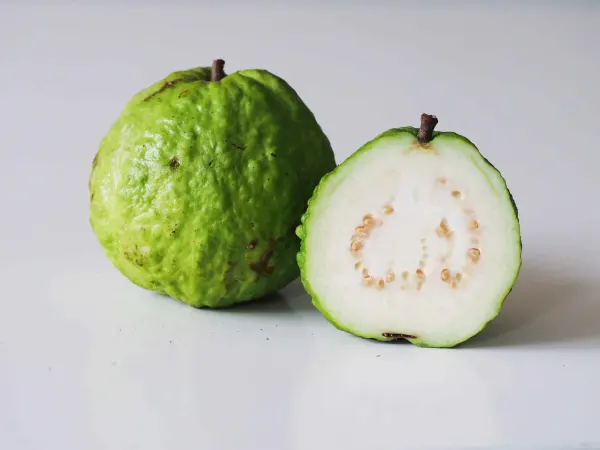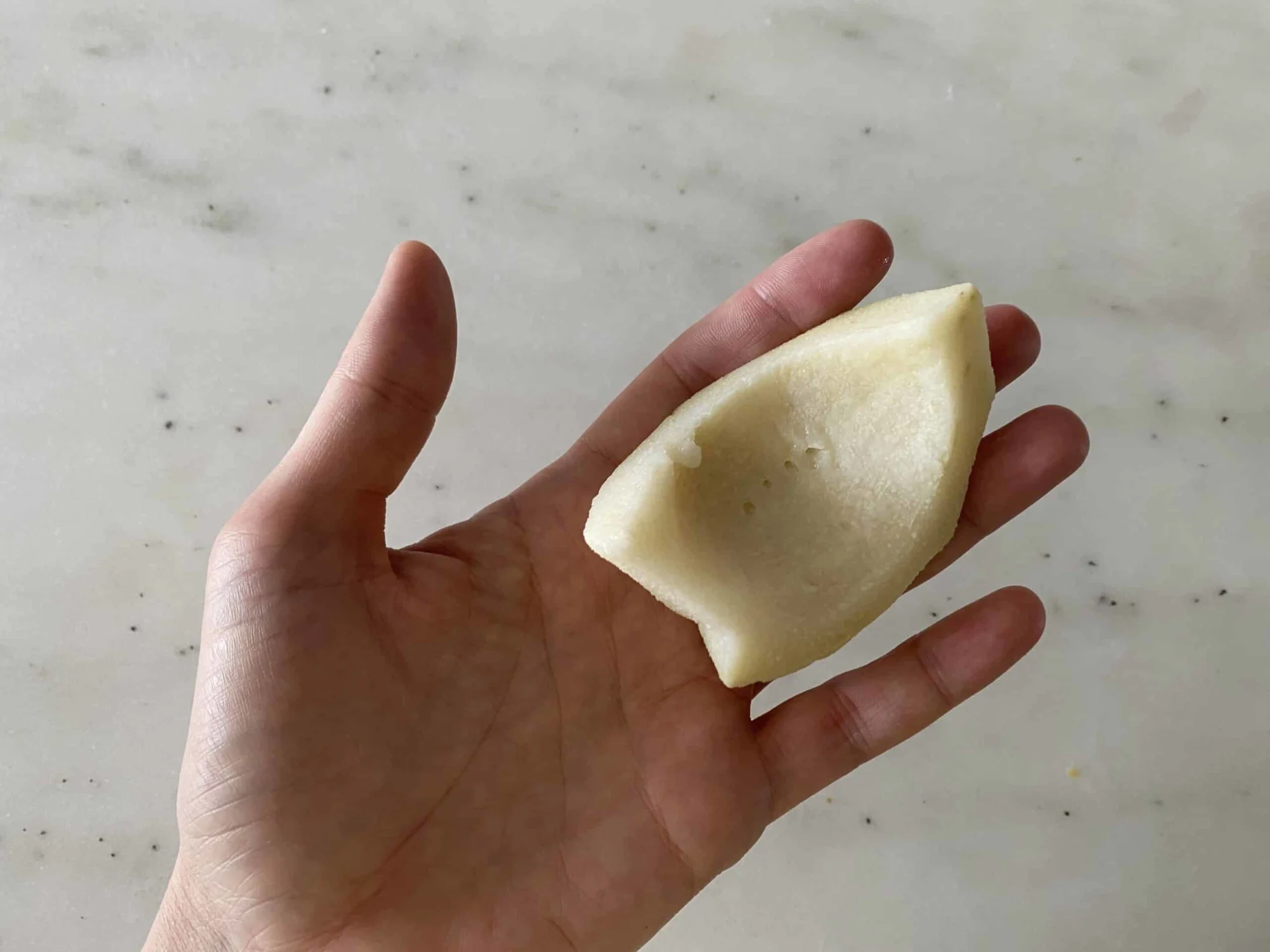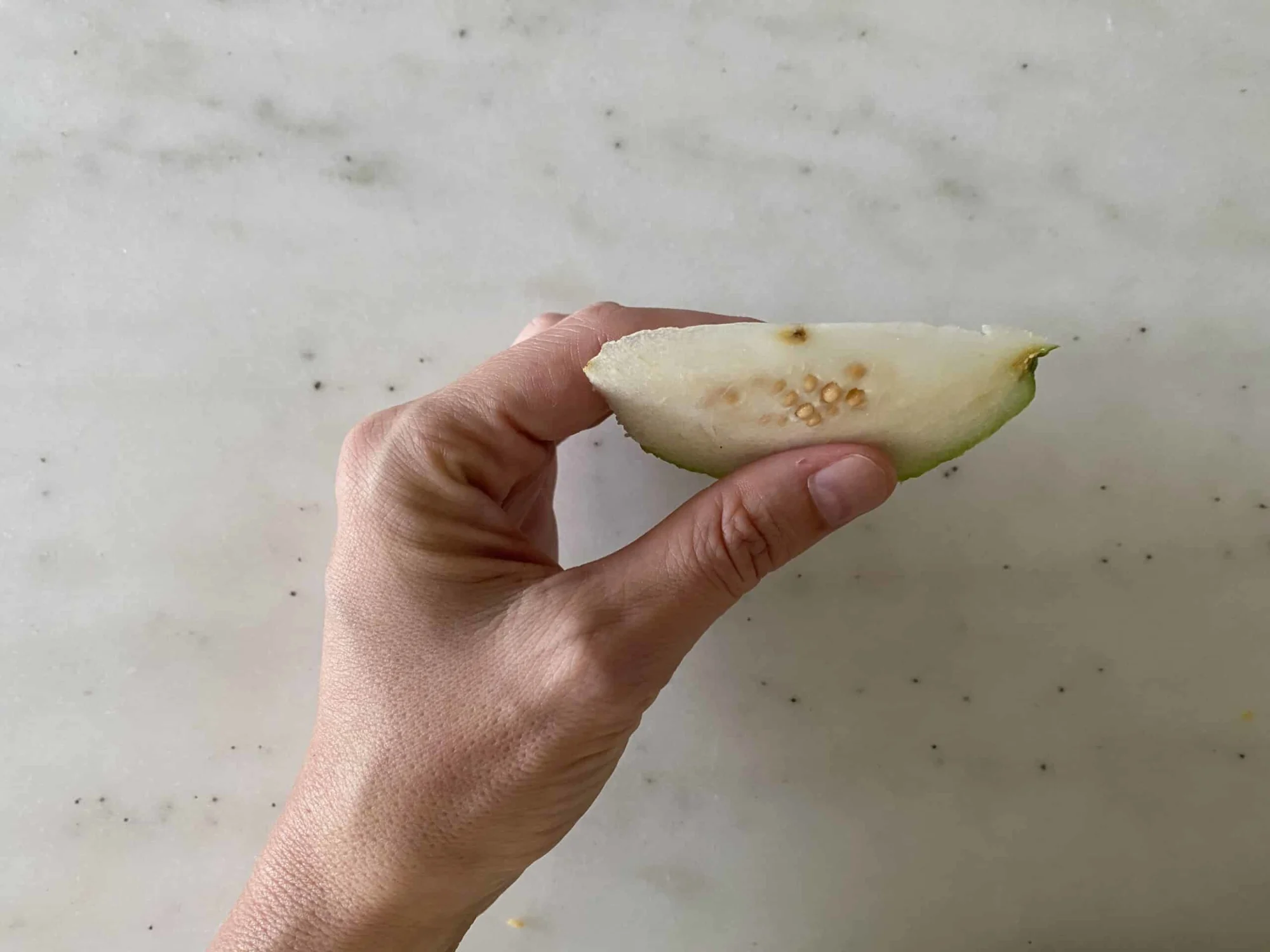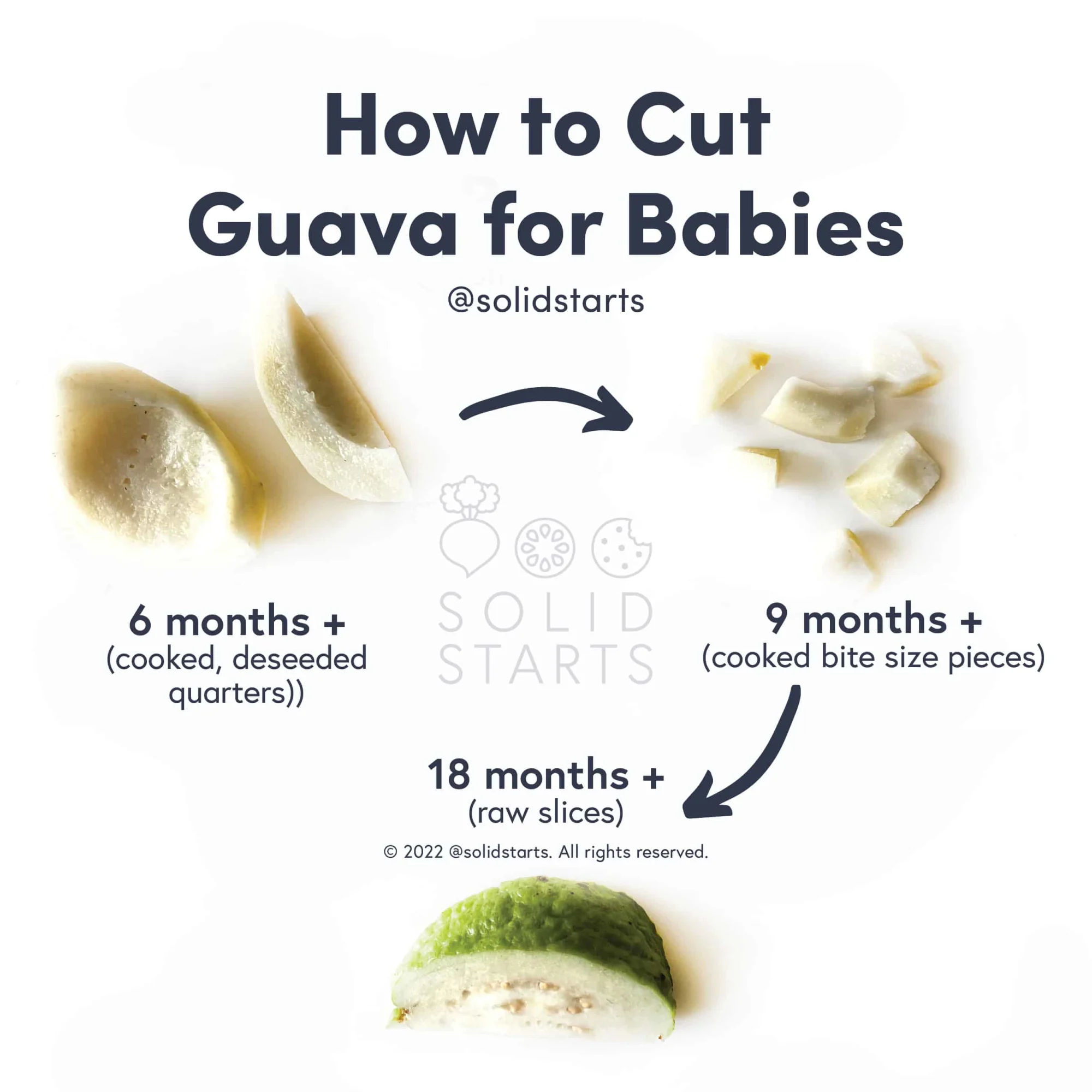Guava (Firm)
Fruit
Age Suggestion
6 months
Iron-Rich
No
Common Allergen
No

When can babies eat guava?
Firm types of guava, as long as they are cooked until soft, may be introduced as soon as baby is ready to start solids, which is generally around 6 months of age. There are hundreds of guava varieties in the world, and they vary widely in texture and consistency, which means they will vary widely in terms of choking risk. From the soft and smooth Mexican Cream guava to the firm, apple-like white guavas, take care to consider any characteristics that might increase the risk of choking (firmness, roundness, slipperiness) or aspiration (loose seeds). For information on soft guava varieties, see guava (soft). Looking for pineapple guava? See feijoa.
Origins of guava
Guava originated in the tropics of the Americas, where the Arawak people learned to harvest the plant that they called guayabo for its delicious fruit. As colonization and trade took guava seeds to South Asia and other parts of the world, the fruit proliferated in dry and humid climates alike, an evolutionary leap that led to hundreds of varieties grown today, all going by the same botanical name. Some guavas are sweet, others are sour, and each has edible skin that ranges from creamy white to lime green to golden pink to crimson. Size ranges, too: there are guavas that are as large as a grapefruit, while others are shaped like a pear. There are even guavas that are so tiny that adults can eat them in one bite like a grape.
Firm varieties of guava (also known as amrood, farang, jambu batu, trái ổi, and more) tend to be large, with a thin, pale green skin and crisp flesh inside. Even when ripe, these types of guava remain firm, and their mildly sweet flesh has a similar texture to apple. Throughout Asia, guava is eaten fresh and on its own (and often a bit underripe), julienned and eaten in salads, and—a common preparation at street vendors—sliced thinly and dusted with a flavorful mixture of salt and chili powder.
Videos
Is guava healthy for babies?
Yes. Guava is loaded with nutrients babies need to fuel their rapid growth. Guava offers fiber, B-vitamins (including vitamin B6 and folate), vitamin E, and potassium. The fruit is also packed with vitamin C to help the body build connective tissue, promote a healthy immune system, and absorb iron from plant-based foods. In fact, guava contains more than four times as much vitamin C as an orange. That’s not all: guava also contains a healthy dose of plant-based omega 3 fatty acids to support brain and visual health. Guava is rich in polyphenols, which are beneficial plant nutrients that, in this case, are antioxidative, anti-cancerous, anti-microbial, and anti-inflammatory. Finally, guava is also an excellent source of fiber, specifically insoluble fiber, which is great for poop but can cause gas and bloating if too much is consumed. For this reason, it may be best to start slow and gradually increase the amount offered.
★Tip: As it ripens, a guava will develop an intense aroma. Note that firm types of guava won’t soften much, even when ripe, so use the fruit’s smell as the first indicator. Store unripe guava at room temperature until ripe, then transfer to the refrigerator, where the fruit keeps for about a week.
Is guava a common choking hazard for babies?
Yes. Raw guava can be a choking hazard, especially the firm or crunchy cultivars. The fruit’s edible seeds can be tricky to manage and may also present an aspiration risk. To minimize the risk, scoop out and discard any seeds and pay attention to the fruit’s texture. The firm, apple-like guavas should be deseeded, skinned, and cooked until soft before serving to babies. As always, make sure to create a safe eating environment and stay within arm’s reach of baby at mealtime.
For more information on choking, visit our sections on gagging and choking and familiarize yourself with the list of common choking hazards.
Is guava a common allergen?
No. Allergies to guava and guava byproducts (such as guava leaf) are rare, but have been reported. Individuals with allergies to latex may be sensitive to guava. Individuals with Oral Allergy Syndrome who are allergic to birch pollen may be sensitive to guava. Oral Allergy Syndrome typically results in short-lived itching, tingling, or burning in the mouth and is unlikely to result in a dangerous reaction. Fortunately, peeling or cooking the fruit can help minimize or even eliminate the reaction.
As you would do when introducing any new food, start by offering a small amount for the first few servings. If there is no adverse reaction, gradually increase the amount served over future meals.
Recommended Guide: Introducing Allergens
How do you introduce firm guavas to babies with baby-led weaning?
Every baby develops on their own timeline, and the suggestions on how to cut or prepare particular foods are generalizations for a broad audience.
6 to 9 months old:
Cut the guava in half and scoop out and discard its seeds and go ahead and peel the citrusy skin if you’d like. If the fruit is firm like an apple or underripe pear, simply steam, poach or bake the deseeded guava halves or quarter pieces until easily pierced by a fork. If you’d like to serve raw guava at this age, play it safe: grate the flesh into a bowl that suctions to the table for baby to hand scoop from. Feel free to dust the guava with plum powder, spices, and even a scant amount of chili powder, but refrain from serving guava with salt or sugar and avoid preserved guava products like jam, jelly, paste, or syrup.
9 to 18 months old:
Continue serving deseeded halves or quarter pieces of cooked guava. If you’d like to explore offering raw guava, play it safe and offer thin slices of deseeded guava or continue grating. If the guava you have is soft and ripe, you can cut it into thin, round slices with or without the skin. Explore dusting the fruit with plum powder, spices, and even a scant amount of chili powder, but refrain from serving guava with salt or sugar and avoid preserved guava products like jam, jelly, paste, or syrup.
18 to 24 months old:
At this age, you can experiment with using fresh guava in smoothies, slicing it into thin slices or grating it and combining with other age-appropriate fruits or vegetables for a guava salad. You can also continue to serve cooked guava in any size. If the child’s eating skills are sufficiently advanced (taking accurately sized bites, chewing well and not overstuffing), you can consider offering a whole guava with or without the skin. Offering a whole guava can actually be safer (as opposed to sections of raw guava that break off more easily) as toddlers can’t take as big of bites from a whole guava as they can from, say, a quartered guava. If your child is struggling with the skin, simply peel the guava, or peel in “stripes” so that some skin is left on for exposure. Lastly, if you’d like to sprinkle a little salt on the fruit, go ahead and do so at this age. Just keep tabs on overall sodium intake and read up on the impact of sodium in the diet.
24 months old and up:
By age 2 most typically developing toddlers will be ready for large sections of raw, firm guava, such as a quartered piece. These large sections of guava can be riskier than a whole guava, so wait until you observe your child to be ready. If you feel your child is not ready for that step yet, you can continue to slice guava thinly or cook until soft. As always, stay within an arm’s reach during mealtime and refrain from offering guavas in strollers or car seats.


Cutting open a white guava from Thailand
Cooking and cutting a white guava until soft for babies 6 months+.
If you are stuck in a puffs and pouches rut, check out our snack guide for 100 healthy and easy ideas for babies and toddlers.
Written by
Expert Tips Delivered to Your Inbox
Sign up for weekly tips, recipes and more!
The content offered on SolidStarts.com is for informational purposes only. Solidstarts is not engaged in rendering professional advice, whether medical or otherwise, to individual users or their children or families. No content on this site, regardless of date, should ever be used as a substitute for direct medical advice from your doctor or your medical or health professional, nutritionist, or expert in pediatric feeding and eating. By accessing the content on SolidStarts.com, you acknowledge and agree that you are accepting the responsibility for your child’s health and well-being. In return for providing you with an array of content “baby-led weaning” information, you waive any claims that you or your child may have as a result of utilizing the content on SolidStarts.com.









